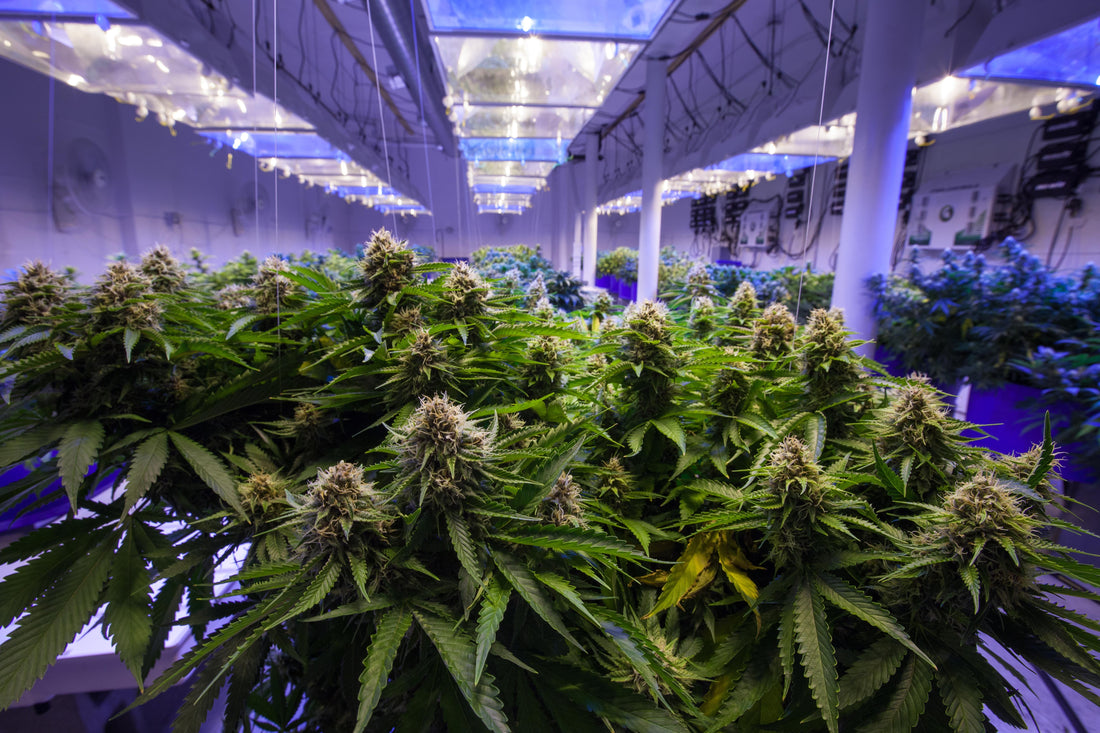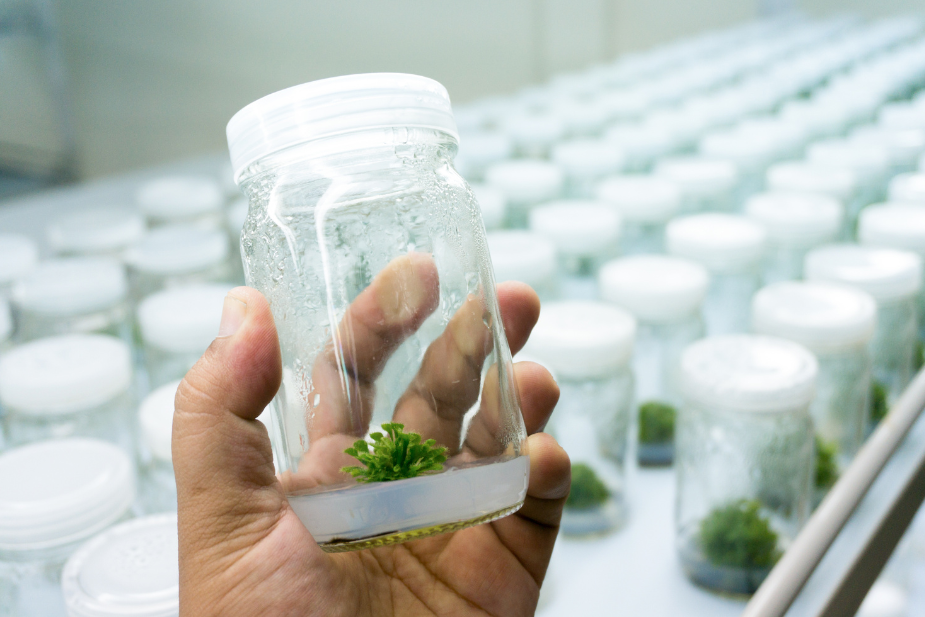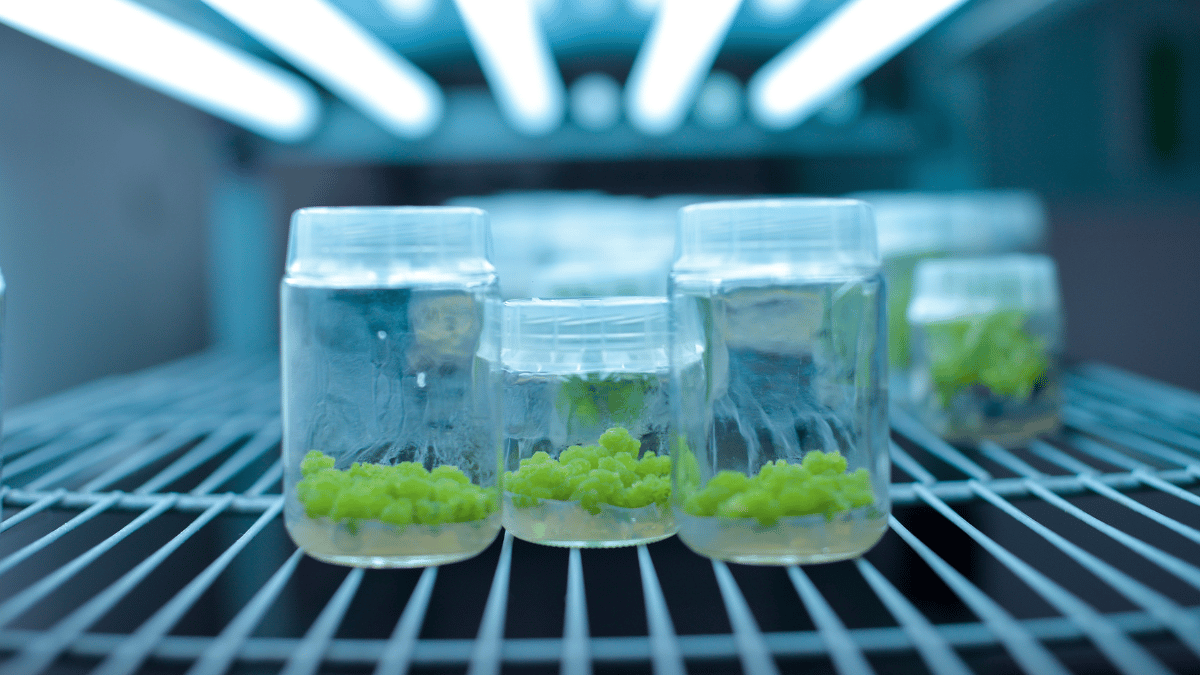
Recent Advancements in Cannabis Tissue Culture
As a content and community manager, I leverage my expertise in plant biotechnology, passion for tissue culture, and writing skills to create compelling articles, simplifying intricate scientific concepts, and address your inquiries. As a dedicated science communicator, I strive to spark curiosity and foster a love for science in my audience.


Cannabis sativa has a long history of applications for medicinal purposes. The plant is also used for industrial, recreational, and agricultural spaces. After its legalization in many countries of the United States for its therapeutic uses including California, Florida, Illinois, Arizona, and New jersey the demands of the plant and its products are rising in demand.
Overview
Cannabis sativa has a long history of applications for medicinal purposes. The plant is also used for industrial, recreational, and agricultural spaces. After its legalization in many countries of the United States for its therapeutic uses including California, Florida, Illinois, Arizona, and New jersey the demands of the plant and its products are rising in demand.
However, because of its controversy—currently ongoing in many countries and past ones in the legalized places—as a drug of abuse, the plant couldn’t be studied in labs for even research studies. Thus, there’s very little advancement in the propagation technique and no solid clinical reports are available claiming the therapeutic potential of the plant. Moreover, not much has been done to solve the challenges associated with growing the plant.
However, several labs over the years have tried to develop and worked on developing methods that could enhance the productivity of cannabis. One of them is tissue culture. It’s an advanced technique where only a few tissues of plants are used to regenerate a whole plant. It involved several types of methods to grow plants in laboratory conditions, but only a couple of them have been successfully developed with reduced limitations.
In this article, you will learn what are the techniques that have been developed over the years by scientists to boost the licensed farms of Cannabis and its metabolites at a commercial scale, especially for medicinal uses.
Cannabis Propagation
Cannabis is divided into two groups based on the production level of psychoactive cannabinoids:
- Hemp: Plants that produce anything below 0.3% Δ9-tetrahydrocannabinol (THC) are classified as hemp.
- Marijuana: Plants that produce 0.3% or greater THC are categorized as marijuana.
The above-mentioned criteria are also taken into account by regulatory bodies for the licensing of cannabis production. Thus, plants having more than 0.3% or greater THC aren’t approved for use.
So far, around 560 secondary metabolites have been discovered in Cannabis, out of which cannabinoids and terpenes are the predominant ones. Some major cannabinoids include cannabidiol (CBD), THC,cannabichromene (CBC), and cannabigerol (CBG). These compounds are actively being studied for their roles in therapeutic areas.
The increasing demands of cannabis and cannabis-based products are increasing more than ever and it’s estimated that the global value of CBD will reach 16 billion by the end of 2025.
The conventional techniques available aren’t able to meet the requirements due to their time-consuming, costly, and laborious procedures. Therefore, tissue culture and other biotech tools are considered to be effective approaches to boost cannabis production and its secondary metabolites.
Tissue Culture of Cannabis
Tissue Culture is the base of many biotechnology tools. Many advanced genetic engineering methods and other biotech approaches depend on in vitro propagation techniques. However, there are several factors that decide the success of in vitro propagation of plants. It includes:
- Genotypes
- Type and concentration of PGRs
- Size, age, and type of explant
- Gelling agent
- Carbohydrate sources
- Type and concentration of macro-and micronutrients
- Type and concentration of vitamins
- Type and concentration of additives (casein hydrolysate, nanoparticles, phloroglucinol, activated charcoal, etc.)
- The pH of the medium
- Type and volume of the vessels
- The volume of the medium per culture vessels
- Culture conditions (intensity and quality of the light, temperature, photoperiod, and light source)
The tissue culture technique is especially more effective when it comes to:
- Assessing the secondary metabolite production.
- Assessing the endogenous phytohormone metabolism signaling in many plants.
- Propagate plants commercially
- Produce engineered biomolecules
- Initiate synthetic biology approaches
The current status on the development and improvement of cannabis propagation is given below:
- Cannabinoid production is highly linked to tissue and organ-specific development and on genes present in trichomes, which are most abundant in differentiated floral tissues.
- The goal of early in vitro cannabis culture was to cultivate callus and cell suspension cultures. Several secondary metabolites are still preferred to be produced by cell suspension cultures, including terpenes, polyphenols, lignans, and alkaloids.
- Hairy root culture is popular in vitro method for secondary metabolite production. It has been used for a variety of species, including cannabis. Its advantages include:
- - Affordable and high production of secondary metabolites
- - High genetic stability
- - Rapid accumulation and growth of biomass
- - It is also possible to cultivate hairy roots in bioreactors in a larger scale and more profitable way.
The tissue culture techniques are still being finely combed for their efficiency in increasing cannabis and cannabinoid production. There’s a lot to be done in the area to boost their productivity to meet market demands.
Strategies to Enhance in vitro Production of Cannabis
Following is a list of areas with the potential to improve cannabis production in tissue culture. The list suggests unchartered territories of tissue culture of cannabis and what can be done to improve cannabis propagation protocols.
- Although somatic embryogenesis is considered the ideal approach because of its ability to regenerate from single cells and reduce chimerism, it has rarely been accomplished in cannabis. So, it can be a potential area for researchers to test the performance of cannabis in tissue culture using the technique.
- Several PGRs and additives have been tested for tissue culture of cannabis including 6-benzylamino-9-(tetrahydroxypyranyl) purin (BAP9THP) and meta-topolin (mT), however, some promising compounds are remained to be checked for cannabis propagation. It includes polyamines, brassinosteroids, nano-particles, and nitric oxide (NO).
- Many cannabis culturists use MS medium. However, factors such as macro-and micro-elements and vitamins affect the organ development of plants in tissue culture. So, these should be analyzed before creating or formulating the media for your cannabis plants.
But, the challenge in designing new media is the optimization of these myriad factors for specific purposes, because of the sheer number of variables and their interactions, which is expensive and time-consuming. Consequently, new approaches like computational methods (i.e., machine learning algorithms) are needed to develop regeneration protocols. Artificial intelligence models and optimization algorithms can help to calibrate tissue culture protocols at all stages.
- Although no studies have examined how wounding affects cannabis micropropagation, it has been observed that callus formation occurs at wound sites, suggesting that wounding may be an effective way to improve plant regeneration.
- Micropropagation of cannabis using thin cell layer culture is another promising approach.
- The use of Bioreactors can help to overcome the recalcitrance of cannabis genotypes to proliferation, rooting, acclimation, and can be used to reduce the overall cost for large-scale propagation.
- Combining polyploidy induction with CRISPR/Cas9-equipped hairy root culture can be considered as a robust method for increasing secondary metabolite production and changing plant chemical profiles.
Choose Plant Cell Technology to Enhance Your Cannabis Tissue Culture Experience
To help the cannabis culturists with their tissue culture processes and help them to pass through the challenging phases, PCT is providing world-class consulting services.
The consulting services are available in two forms: one-on-one phone calls and on-site visits. So, if you need an instant solution for your specific challenges you can have a one-on-one call with our scientists and get your answers instantly.
However, if you are someone building a cannabis tissue culture lab or are already an established lab that is looking to train its staff or wants solutions for pathogen eradication in its commercial-scale plants, you can choose an on-site visit consulting service. Our team will visit your lab and will guide you through the whole process.
The services provided during on-site visits include:
- Blueprint, Budget, & Equipment: build and operate a successful tissue culture lab.Media Preparation: 2 sets of proprietary media preparation SOPs (4 in vitro shoot multiplication protocols and 5 in vitro rooting protocols along with coaching on how to conduct factorial trials).
- Micropropagation: how to select, surface sterilize, and induce nodes into media for removal of surface pathogens and in vitro cloning applications.
- Meristem Dissection: how to dissect apical meristem to remove viruses including HpLvd, Cannabis Cryptic Virus, Lettuce Chlorosis Virus, and more.
- Synthetic Seed and Cryopreservation: Long term genetic storage solutions.
- Pathogen Remediation by Media Amendments: how to remove viruses, systemic fungi, bacterial infections, and endophytes.
- Gender and Pathogen Screening by PCR: Eliminate male plants, identify cannabinoid ratios, and protect your mothers from pathogens and pests
Reference
Hesami, M., Baiton, A., Alizadeh, M., Pepe, M., Torkamaneh, D., & Jones, A. (2021). Advances and Perspectives in Tissue Culture and Genetic Engineering of Cannabis. International journal of molecular sciences, 22(11), 5671. https://doi.org/10.3390/ijms22115671.
Blog Categories
View by Level
Popular Blogs

DKW Media: Definition, Use, and Applications
Introduction In vitro plants need nutrients to grow in a lab environment. These media are composed of micronutrients and macronutrients...
Read More
Callus Culture: Definition and Applications
Introduction Tissue culture is not just one technique! Yes, you heard right! As you know, tissue culture is an advanced...
Read MoreSubscribe to Our Newsletter







Join the conversation
Your email address will not be published. Required fields are marked